Film Festivals in the Age of COVID-19: The Big Pivot
Written by: Melanie Addington | June 12th, 2020
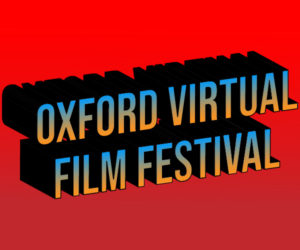
Article author Melanie Addington runs Oxford Film Festival which pivoted to a virtual film festival in 2020. In doing so, she decided to then examine the bigger picture of the regional film-fest landscape, moving forward.
Specific mission-driven regional film festivals are seeing interesting pivots in the aftermath of the coronavirus pandemic that are opening up bigger reimaginings of how they can continue to support their filmmaking communities and towns, as well as the larger indie-filmmaker network. While the larger festivals grapple with how to keep the old model going, many smaller festivals are thriving, or at least trying to do so, with some launching as early as March to numerous summer and fall festivals planning a launch later this year. Innovation is also being seen on the platform level from both new and old organizations. But some of the changes were long overdue to better support filmmakers, say some industry leaders.
The Big Picture
Film Festival Alliance (FFA) is a non-profit for mission-driven film festivals with over 180 organizations represented. Their focus is on advocating for a sustainable and inclusive environment for the industry. FFA Executive Director Lela Meadow Conner has taken on an active role in gathering the larger festival community for weekly chats since late March about all areas impacting the industry, even opening up all the recorded calls to non-members to better help serve the filmmakers and festivals impacted.
“Overall there are so many questions,” Meadow Conner said. “Some are hesitant until they see someone else doing it especially on the distributor and filmmaker side. But regional film festivals have been the most nimble and creative. Likely because everyone is so used to doing this on a dime so pivoting is not as difficult for smaller festivals. But it is going to take a couple of bigger festivals to share their plans before things really start changing.”
Platforms Emerge
Seed&Spark (the popular crowdfunding site focused on equity) CEO Emily Best said her staff member Clay Pruitt bravely proposed a new virtual platform which scared her at first.
“With how quickly the cancellations swept the nation and it became clear that gathering safely would be a long way away, we wanted to be sure we were offering support to some of the most vital members of our ecosystem who have supported us, Best said. “We would never have been able to build Seed&Spark without film festivals – it’s the distributed infrastructure we leveraged in order to grow, learn and innovate. We know personally how vital these cultural institutions are, and we want to make sure they’re around for a long time. However, we didn’t think that just offering a technology tool would be sufficient. Most festivals are simply not set up to pivot to online businesses. It’s not in their expertise nor, frankly, in their interest! So we wanted to also build processes and structures that would help them move online. Co-marketing packages, guidelines, user help guides for audiences who may not be as savvy with engaging online, and a roster of celebrities to drive awareness for both the festivals and the creators whose work they program.”
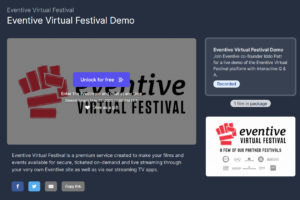
Eventive saw the future coming in early March as the cancellations began rolling in. Owner Iddo Patt spoke with his son and developer of the platform, Theo Patt, who was having to head home to Memphis from Stanford. Having developed the platform for ticketing when finding that nothing like it existed, Eventive knew in seeking partners to make the virtual fest happen that they needed to build their own again.
As filmmakers first, Eventive knew that a safe platform to protect filmmaker content was mandatory. Flexibility and ease of use for the audience and festival organizers was also part of the mission. While they launched their new platform at end of April with only a couple of festivals, they have now grown to over 90 and more are adding on each day.
“The second week of March, it became clear that there would be no physical film festival or cinema screenings for a long time,” Patt said. “In keeping with our mission to bring more and more people a better and better film experience, Theo and I decided to build out Eventive Virtual Festival as an integral part of the Eventive platform, with studio grade DRM for true content protection, the full suite of Eventive ticketing, pass and member benefit management features, multiple sponsorship integrations, and built in livestreaming + VOD options to to bring the complete film festival experience online.”
CEO Benjamin Oberman of Film Festival Flix already had a platform for festivals to have a channel for year round engagement outside of the physical festival. A model that some were already embracing long before the pandemic such as Catalina Film Festival.
But the transition to virtual festivals became more than expected.
“I didn’t think it was a pivot until Annapolis, Oberman said. “But it is an entire new world. The virtual festival itself is entirely different.”
Immediately Oberman saw that trying to mimic what happens in a physical festival doesn’t work for online audiences. Finding your virtual balance is crucial to going online.
“Keep in mind, you are dealing with traditionally mostly technically ignorant audience,’ Oberman said. “No matter what platform you are going to use this is new for them. No matter how many emails you send, not all of your traditional audience is going to rush to a live event. Having larger windows of time for audiences to see your film cuts down on the level of panic to trying this out. Time is your enemy. The less time you have the more afraid your audience is going to be and unlike at the physical festival you can’t walk them down to the screen or talk face-to-face”
Jon Gann, strategist for film festivals across the world, said too many festivals are rushing into decisions and encourages taking a step back. He has helped provide a guide on how to start up a drive-in, a second popular pivot option to over 200 festivals.
“Vendors who have screens are swamped and turning away business, “ Gann said. “It is the wild west right now but there are only so many inflatable screens in the country. Stop and ask yourself: “Why are you doing it? Does it make sense?”
For festivals, Gann recommends taking the time to consider what type of content people want in a drive-in.
“They are not watching indie films. It is not the venue for that. Some films need to be seen in an intimate theater experience,” Gann said.
Gann said festivals using drive-ins as a marketing tool, not as a money maker are seeing the best successes. It serves as a reminder of how you can best serve your community.
“Festivals have to rethink what they are doing,” Gann said. “There is no shame in taking the year off. Right now audiences don’t expect anything but are happy to have anything.”
But for many festivals, taking the year off would mean leaving filmmakers behind. So many are trying alternative plans whether going online or going back to an older model of a drive-in.
According to Film Freeway, in North America alone there are 4,371 film festivals, not counting the usual online film competitions. Globally the number is doubled. While this is not all of what is happening in the regional festival landscape, here is a sample of what is being seen below.
Recent Virtual Festivals
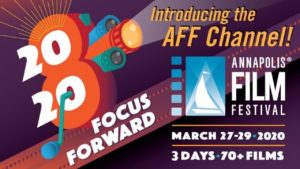
Annapolis Film Festival, March 27-29
“We were one of the early festivals (along with SXSW) to be confronted with having to cancel and we decided to take our festival online, Programmer Derek Horne said. “We kept our same dates of March 27-29 so we had less than two weeks to renegotiate filmmaker’s contracts, pre-record filmmaker Q&A’s via Zoom, and prepare everything for the virtual festival. It’s all been quite the learning experience. And since those dates we have been partnering with distributors like NEON and Bleecker Street to stream their films that we had originally programmed in our lineup like MILITARY WIVES and SPACESHIP EARTH.”
International Wildlife Film Festival, April 18-25, 2020
For the 43rd festival year, IWFF embraced the theme Ignite which was intended to bring awareness to those that are sparking change as well as focus on how wildlife had been impacted by wildfire through film. As Spring arrived in Missoula, so did COVID-19. With less than three weeks to move IWFF online we embraced the opportunity to reach new audiences. The festival saw growth with 49,202 film views citing the largest ever and 1,602 passes sold. Of the 86 film selections, 77 stayed on board, 61 shorts and 16 features. They saw a 3000% increase of traffic on their site.
“Unprecedented times like these ignite change and we are proud to have risen to the occasion.
Our vision for the festival doesn’t stop here, we will continue to present a deeper understanding of wildlife throughout the year within a multi-tiered approach to this year’s festival,” Carrie Richer, International Wildlife Film Festival Artistic Director said.
Illuminate, seasonal screenings
“Our May festival was cancelled, and I’m 90% sure we’re cancelling our October mini-fest too. We’re pivoting big time to virtual. Phase 1 is our month-long weekly virtual screening series. Phase 2 will be a year-round virtual Screening Room, not a VOD platform per se, but with monthly live screening events (live Q&As and “Reel Healings”) with 24-hour viewing windows,” Executive Director Danette Wolpert, said.
Film Pittsburgh, April 23-May 3
“Film Pittsburgh pivoted very quickly after cancelling our 27th annual JFilm Festival (Jewish-themed feature length films) to offering a short film (already online) and a Q&A with each filmmaker every day of what would have been the fest. We called it the Re-Imagined JFilm Festival and doubled our in-person attendance,” Programmer Paul Sloop said.
“We also run Pittsburgh Shorts and thought that this would be a good way to engage the JFilm audience with shorts and since we already have relationships with many of the short film directors, we were able to do the Q&As.”
While the festival hasn’t happened yet this year (scheduled for October) they launched a virtual channel on Eventive to support alumni projects for the month of May. Dubbed “From Nola With Love,” the channel proceeds support the festival alumni 100%.
“This is a very basic thing, but we also surveyed our submitters about what they want to see from us/how they’re feeling about online program delivery and are learning a lot,” Fallon Young New Orleans Film Society Executive Director said. “We put up the individual filmmakers Venmos/Cashapps if they wanted us to, so hopefully people will tip filmmakers they like.”
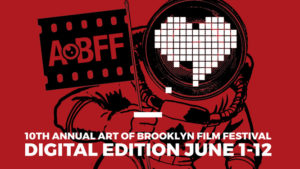
The Art of Brooklyn Film Festival, June 1-12
“As an NYC festival, we anticipated the toll COVID-19 was going to take on us so we started planning to adjust our event back in February, Joseph Shahadi, Executive Director said. “It was an enormous task to translate AoBFF, which is known for producing live screenings in multiple neighborhoods across Brooklyn, to a digital format. We are a filmmaker-focused event so it was essential for us retain as many of the features of the festival experience as possible, for both filmmakers and audiences. But we have always embraced new technology and have a great relationship with Eventive that allowed us to directly interact with them as they developed their new virtual festival platform.”
Summer Fests and Fall Landscape
While some festivals are holding on to the idea of being able to be a physical festival in the fall or staying mum on their plans, others are preparing now for either virtual or hybrid options knowing that the economic and national landscape has changed since March.
Cordillera International Film Festival, July 23-26
“We’re pivoting to a Drive-in experience and Virtual, Executive Director Emily Skyle-Golden said. The Friday night screening of our fest is usually a Movies in the Park event – we screen outdoors, on an island that’s surrounded by the river that runs through downtown. We usually have 1K – 2K attend – that’s the event we’re shifting to a Drive-in experience. The rest of our event is going virtual.”
Joedance, August 6-8
The festival raises funds and awareness for pediatric cancer research at Atrium Health Levine Children’s. Founder Diane Restaino started the festival to honor her son Joe.
But as many challenges as the new model represents, Restaino is excite for the idea of the films finding a larger audience outside of those who can attend in Charlotte in August. The festival raises over $200,000 each year for a variety of cancer research and treatments as her son’s bucket list requests.
“Cancer doesn’t stop. That was one of the reasons, the main reason for me.” Restaino said about pivoting to virtual. “Joe’s foresight and willingness to make a difference creates real sustainable change.”
Micromania Film Fest, July 18-25
“MicroMania Film fest was envisioned as a hybrid in-person and online VOD event starting this year,” Lukia Costello, Festival Director, said. “When Covid-19 hit the in-person event was scrapped and I decided to start sending acceptances on a rolling basis and offering filmmakers the option to stream their films on our Vimeo, FB and IGTV channels that I created. These brilliant shorts need to be seen and they are more likely to be seen in aggregate. It made sense to offer this at a time when homebound folks are looking for new things to stream.”
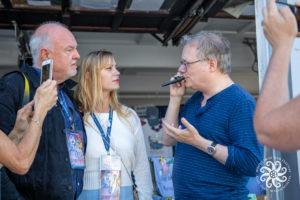
Woods Hole Film Festival, July 25-August 1
“We are Pivoting from scratch, I like to say,” Executive Director Judy Laster said. “We plan to keep pricing what it normally is because the value is the value. We aren’t Netflix. We don’t have economies of scale. We are confident what we are doing is reflected in the price.”
But Laster said they plan to still make things happen during the festival virtually to make it feel like Woods Hole Film Festival including their well-beloved tradition of filmmaker clog dancing.
“We are all trying,” Laster said. “We all want to show your films as much as the filmmakers want to show your films.”
Sidewalk Fest, August 24-30 + Cinema (year round)
“We made the decision to close our 7 month old film center and cinema on March 12 and at the time, had no idea how long the closure would last or what the consequences would be,” Executive Director Chloe Cook said. “In the time since, we’ve launched a curbside concessions program which operates every Thursday, Friday and Saturday as a way to keep the physical space of our cinema “alive” in people’s minds and give some hours to our FOH staff.”
The staff also hosts virtual Happy Hours for Alabama Filmmakers and started a virtual cinema. But they’ve seen real success with sell out screenings at their new Sidewalk Starlite pop-up drive in.
“These are socially distanced drive-in screenings of well-loved titles, all PG-13 or under. We sold out the first event, a 25th anniversary screening of Clueless (only 25 cars allowed) and have since switched locations to accommodate more cars. Our annual Festival is scheduled for 8/24-30 and though we don’t fully know what this year’s event will look like we are working to build virtual elements as well as drive-in element, with our fingers crossed that we can still use some of the beautiful venues that make our event special (with social distancing measures in place), Collins said.
Tampa Bay International Gay and Lesbian Film Festival, October 2020
“Given the changes in movie viewing preferences over the last few years, we discussed virtual screenings to complement our live screenings, but when COVID-19 hit we wasted no time in making the move to continue serving our audience. Now we can offer a variety of content for our diverse audience, more frequently,” President Rob Akins said. “I am planning to book continuous online screenings for the rest of 2020 in lieu of our physical festival in October.”
Into the Festival-Landscape Future
While for some, the 2020 regional film festival landscape feels temporary, both Gann and Meadow Conner say that those looking to expand into more collective partnerships both within their local community and the larger arts community is the next step.
“Being more equitable with our filmmakers and our audiences, this is going to be part of the landscape now,” Meadow Conner said.
Film Fest Alliance partnered with Theatrical At Home for as of this reporting two Film Festival Days where festivals across the country work in partnership to support one film.
“They provide all data to the festivals they partner with and the filmmaker, regional film festivals connecting audiences to watch the same film at same time across the country,” Meadow Conner said. “This is a way of unifying film festivals, similar to Arthouse Theater Day. There is collective power in 38 film festivals unifying to promote a film. Regional festivals have power to help filmmakers monetarily and to build an audience and open doors for them.”
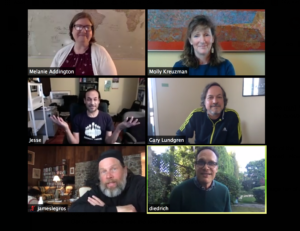
Meadow Conner said the first Film Festival Day which supported Phoenix, Oregon was such a success that they decided to continue the model with Life in Synchro. The unified 39 film festivals represented 23 states, had a box office of $16,870 for one day and 437 joined in the Q&A. The combined email marketing was 333,000 emails combined and over half a million social media hits. Compared to taking that physically across the country one at a time, the impact is seen in an immediate way.
Emily Best agrees that “what filmmakers want is to be in control, to collaborate with folks who want to elevate them and their work, and to get their work in front of audiences who care about it. That’s all they’ve ever wanted.”
But as people grapple with the future of the industry and existence of their own role in it, some are taking the opportunity to try and keep things the way they were.
“Sadly, in the pandemic I think a lot of the organizations who rely on filmmakers’ work for their very existence are trying to scare filmmakers into thinking it’s more important than ever to follow the rules,” Best said. “Rules that didn’t serve the filmmakers best interests even in the best of times. I would like to see people in our industry stop highlighting all the problems and challenges and start experimenting with solutions.”
Best and Meadow Conner both said what is needed now is transparency of the results. What is working for virtual festivals and what is not? What is working for distributors willing to try the new models and what is not? What is working for filmmakers and what is not?
“Transparency and collaboration are the best weapons we have right now,” Best said.
Oberman says festivals that plan for as much information on how to transition for their audiences the better.
“If you don’t properly prepare it can be your death,” Oberman said. “Think like a lawyer. What is every way this can go wrong and how can we avoid it.”
While the virtual landscape has seen the ability to reach out to new communities, it also is providing new accessible options.
“Not just for the disabled or elderly community, but for family engagement,” Oberman said. “This is a new way forward. Going back when digital began everyone tried to make it look like celluloid but they are different mediums with different pros and cons. Respect the difference and learn how to use the tools. Virtual festivals should never stand alone, even though this period is unique. But discovery and streaming really only work as an extension to your live events.”
Follow the author on Twitter at @meladdington

